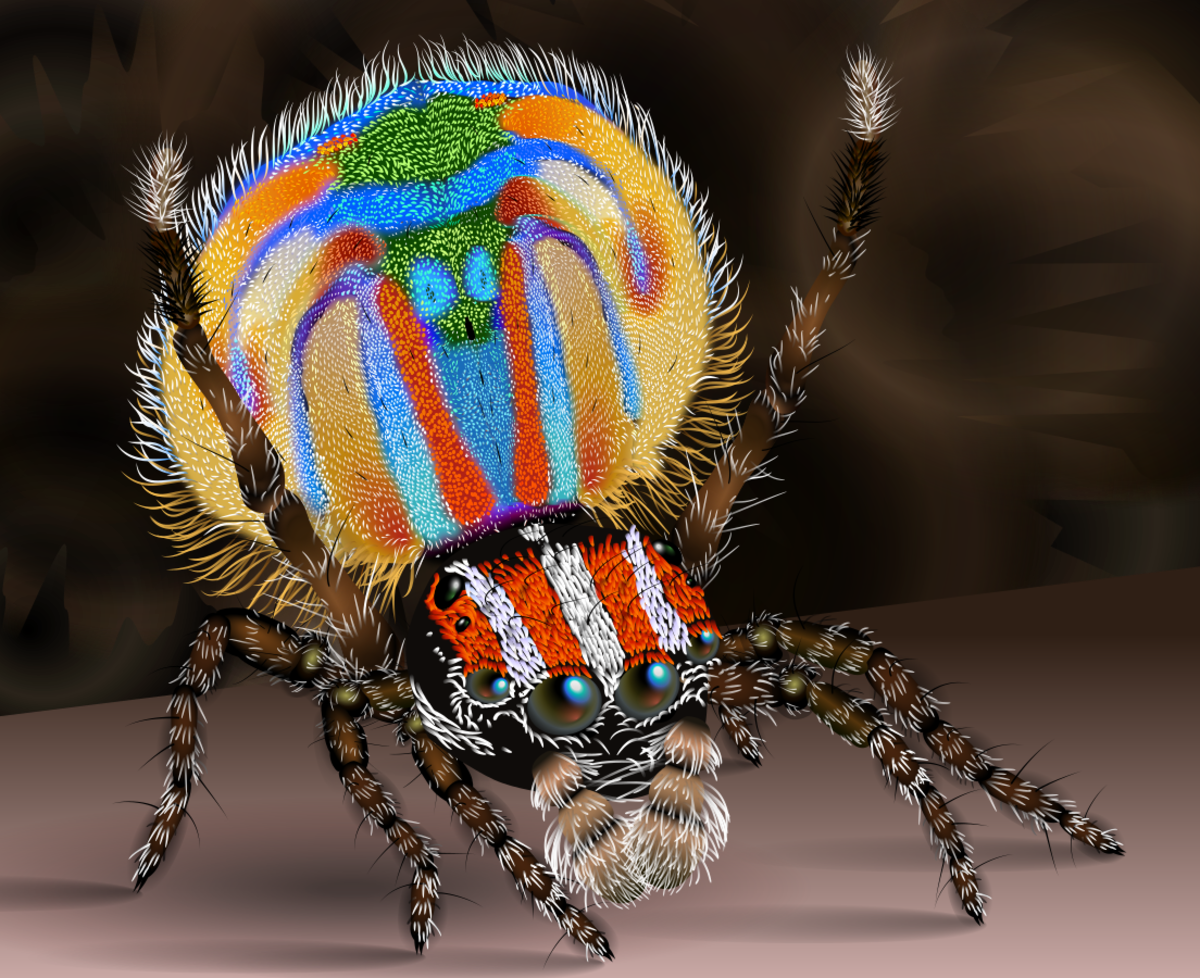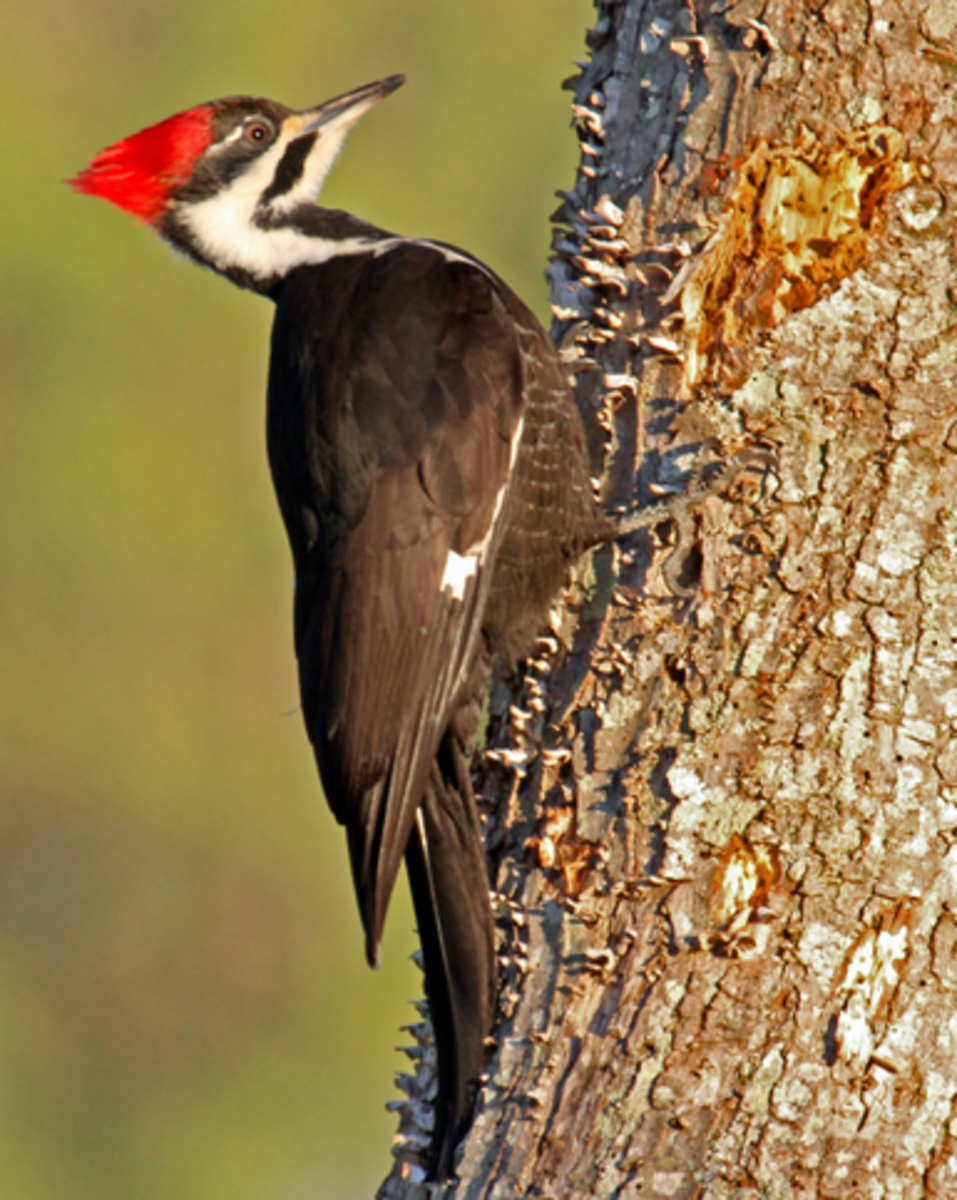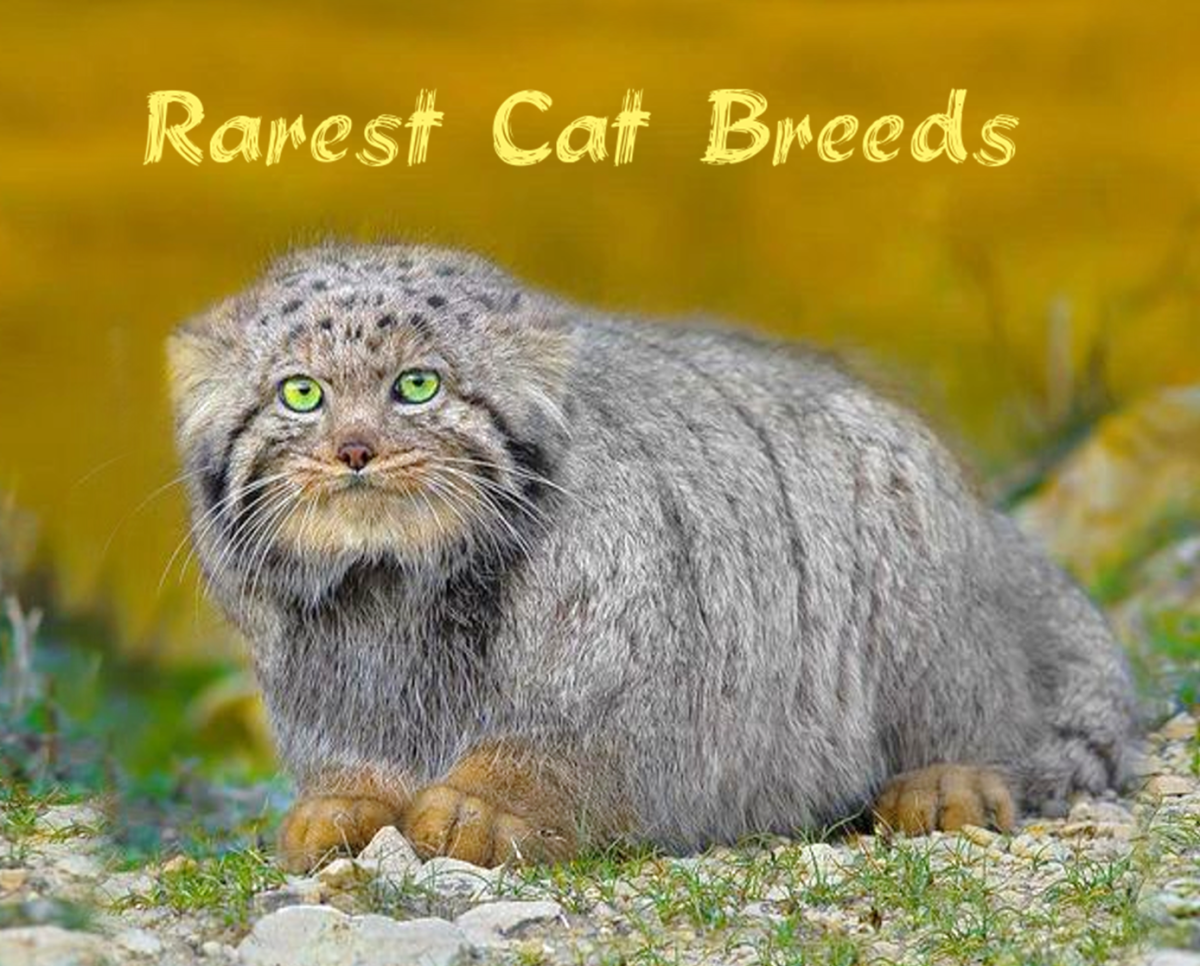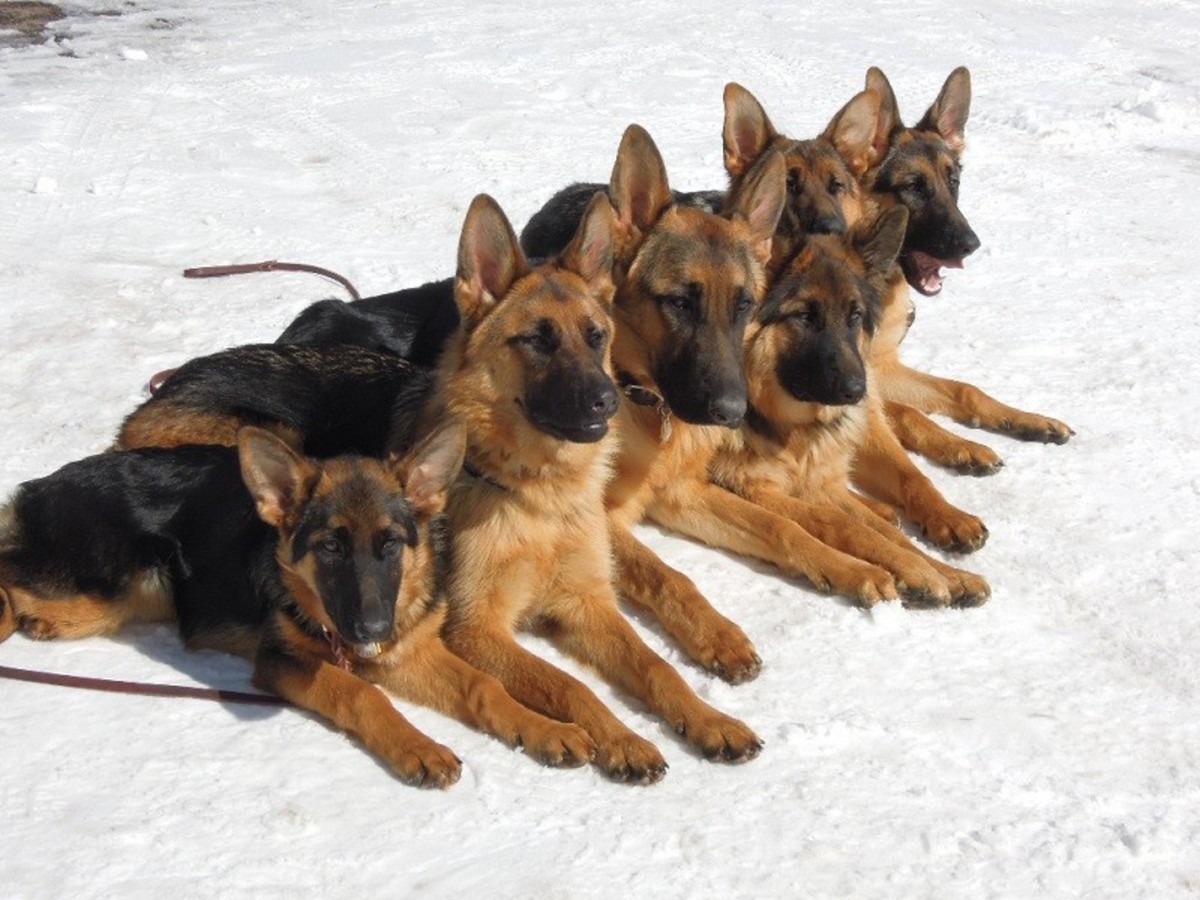Bornean Orangutan
Scientific Name: Pongo pygmaeus
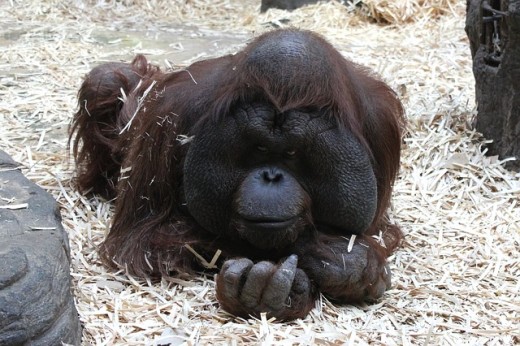
Bornean Orangutan Description
The largest of the orangutan species is the Bornean. The males can be as much as 165 pounds with the females about half that size, close to 85 pounds. The males are as tall as 5 feet with the females quite a bit shorter around 3 feet. You will notice that they have a diamond shape to their facial structure. Many people assume they are all reddish brown in color but they can be any shade of red, orange, brown, or a mixture.
Orangutan Facts
- Orangutan Facts, Bornean Orangutan, Sumatran Orangutan
Orangutan Facts and Information. Feeding, habitat, distribution, reproduction, anatomy and more. Facts about Species like the Sumatran Orangutan, Bornean Orangutan and many others. - The Portal of Life on Earth - Amazing Animal Facts
Amazing Animal Facts - The Portal of Animal Diversity. Visual index of animals. Dolphins, Whales, Penguins, Sharks, Tigers, Elephants, Flamingos, Otters, Killer Whales, Seals, Sea Lions, Sea Turtles, Polar Bears, Walruses, Squids, Manatees, Snails, G
Bornean Orangutan Anatomy
They have bodies that are covered with hair that is quite thick. This is puzzling to some people due to the fact that they live in warm climates. This hair though helps to protect them from the sunlight. When they get too much sun it can damage their bodies so this is a natural way for that to not occur. They are very muscular as well as stocky in their build. Like other higher primates they don’t have a tail as part of their anatomy.
The heads on the Bornean Orangutans are quite large compared to other types of higher primates. One way to differentiate the males from the females are the check flaps. Only the males will have them. The size of them depends on the age of the orangutan. The older that one is the bigger that they will be. This is one part of their body that continues to grow even after they are mature.
Taking a close look their hands and feet, you will notice that they have four fingers with four toes and then opposable thumbs on both. This allows them to be able to complete a variety of movements. They can grasp equally well with the hands as with the feet. They are able to move effortlessly through the trees by swinging and grasping with those body parts.
Bornean Orangutan Evolution
They are believed to be related to humans even though their genetic profile isn’t nearly as close as that of the gorilla. It is noted that about 20 million years ago the higher primates separated from the lower primates. However, there are fossil remains of primates more than 70 million years ago. Right now we just don’t know for sure how that links to the present day Bornean Orangutans.
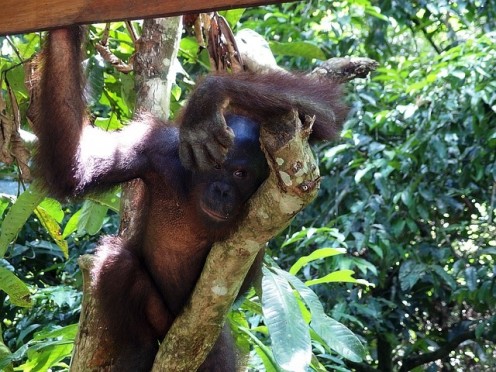
Amazing Animal Facts
- Tiger Facts
Tiger Facts and Information. Feeding, habitat, distribution, reproduction, anatomy and more. Facts about Species like the Siberian Tiger, Bengal Tiger, Sumatran Tiger and many others. - Manatee Facts
Manatee Facts and Information. Feeding, habitat, distribution, reproduction, anatomy and more. Facts about Species like the West Indian Manatee, Amazonian Manatee and others. - Facts about Dolphins
Facts about Dolphins, Information about Bottlenose Dolphins, Pink Dolphins. Dolphin Information
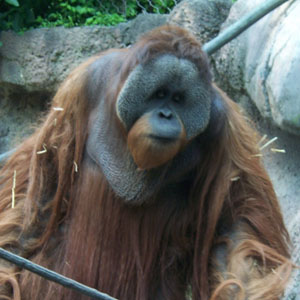
Bornean Orangutan Behavior
They have unusual behaviors for primates though. For example they will spend their lives alone instead of with a troop. They only time you will see them together is in regards to the mothers and their offspring. The males will establish a very big territory that they move around within. The females will have territory as well but it is smaller. It also often overlaps with that of several males.
The Bornean Orangutan uses the strength of its body to move around in the trees, swinging from limbs and from vines. They are able to move extremely fast with this process yet it doesn’t take up very much energy to do so. They are able to spend most of their time high up in the trees and that helps to protect them.
They are considered to be very intelligent and to have excellent memories. They are also fun, especially when they are young. They have a variety of games and things that they play and it is interesting to watch them interact with their mothers. They are vocal but because they are loners you won’t hear them as often as other primates.
They are able to learn a variety of things though that researchers want to teach them. Unfortunately they also pick up bad behaviors from people that see them in captivity. While they may think it is fun to get the Bornean Orangutan to copy their behaviors it can be very difficult to get them to stop mimicking them.
The average life span in the wild is from 35 to 40 years. There is a high mortality rate for the young but if they can survive the first couple of years they have an excellent chance of being an adult. In captivity they can live to be about 60 years of age. They seem to do very well in such an environment as long as they have plenty of room and they aren’t forced to share it with others.
Bornean Orangutan Habitat
Those that are remaining in the wild live in an area of Asia called the Island of Borneo. This is both a tropical and sub tropical region with very warm temperatures. They won’t often be seen in the ground but up in the thick trees where they can often remain hidden from other animals.
They range quite a bit when it comes to the area of the trees that they live in. Some of them are quite close to the ground while others are more than 100 feet from it. They have to find their own territory that also offers enough food and protection. More than one Bornean Orangutan may be present in the same area but at different heights on the trees.
- Elephant Facts
Elephant Facts and Information. Feeding, habitat, distribution, reproduction, anatomy and more. Facts about the African Elephant and the Asian Elephant and the conservation efforts made to preserve Elephants. - Gorilla Facts
Gorilla Facts and Information. Feeding, habitat, distribution, reproduction, anatomy and more. Facts about species like the Eastern Gorilla and Western Gorilla. Also the conservation efforts made to preserve Gorillas.
Bornean Orangutan Feeding Habits
They are able to find plenty of sources of food in that habitat. They look for the different types of fruit that form on the trees. They do migrate around their home territory looking for food, and finding the fruits that are offered during the various seasons. They also will continue to move so that they don’t take away all of the vegetation during their eating either.
They will also consume leaves from the trees, shoots, and small bird eggs. They get the water they need from these foods so they don’t have to go in search of it elsewhere either. Sometimes these animals will go to the ground though to eat dirt. It has tons of nutritional value in it for them.
Many people realize it but the migrational eating pattern of the Bornean Orangutan helps to ensure they have plenty of food later on as well. This is because they spread the seeds of the plants and the fruits through their movements. This also helps to provide food sources for other animals that live in the same habitat as well.
Bornean Orangutan Reproduction
There isn’t a set season for mating to occur. As long as the basis needs of the animals are met they are likely to engage in it. The males will make very loud calls that the females are attracted to. They may mate several times for a day or so before separating again. The females will have one young in a couple of months.
She will care for it very well by feeding it milk from her body. They are often seen cradling their young just like we do with human babies. As the baby gets older she will hold it on her back as she moves around. After about four months the mother will start feeding the baby pieces of fruit and other foods along with smaller amounts of milk. The young will remain with the mother until it is about 7 years old and then head out for its own territory.
Bornean Orangutan Predators
The fact that these are large animals and the area where they live; they don’t have too many problems involving predators. Sometimes they young can fall from the trees and die or they end up being eaten by one of the felines. They have serious problems though when it comes to humans. They have seriously hunted them almost to the point of extinction.


